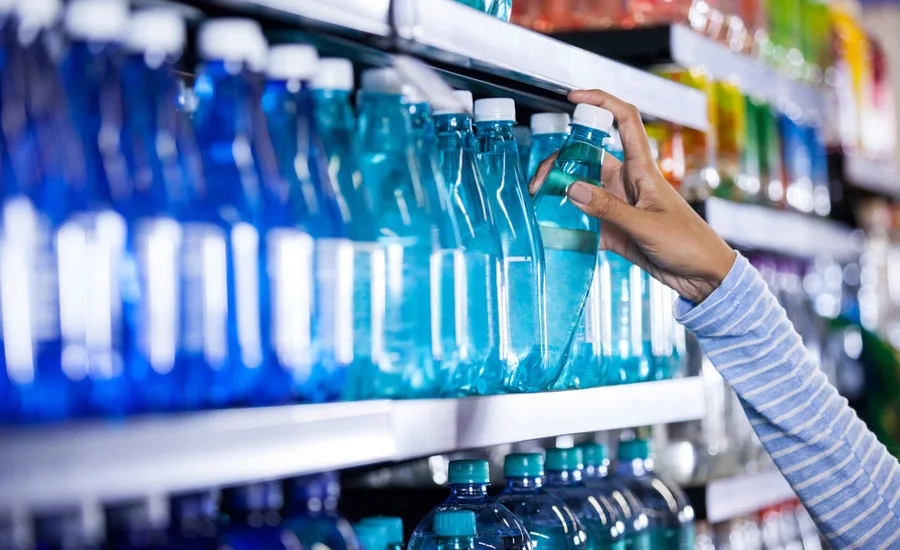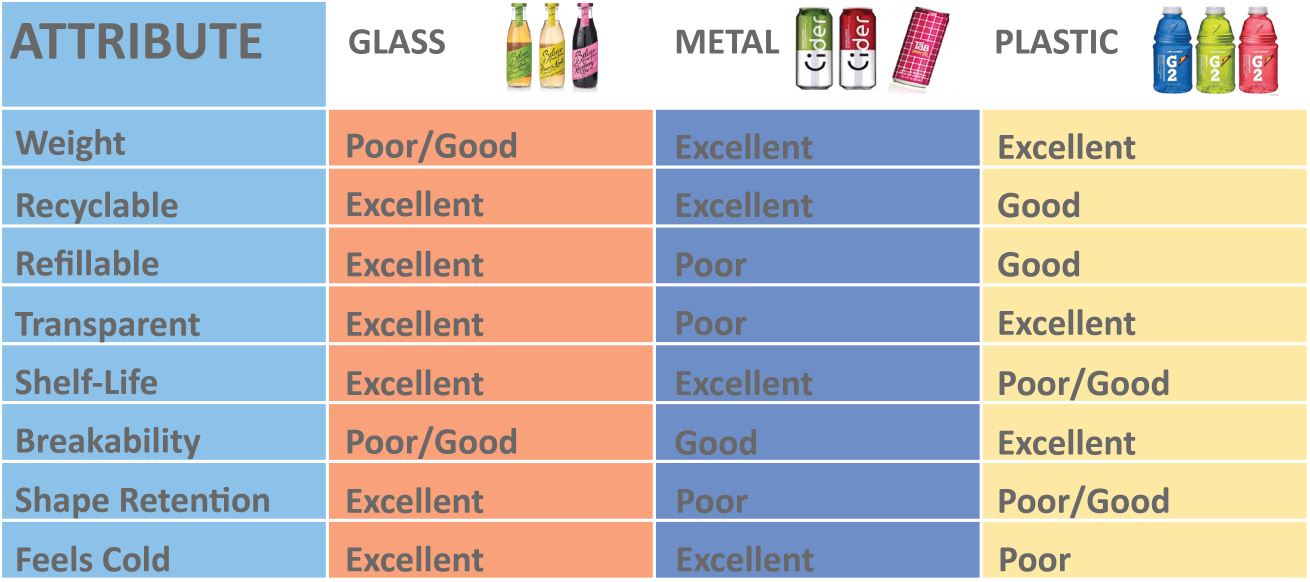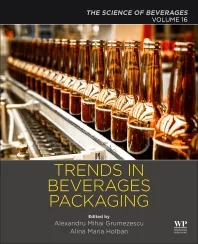Sponsored Content
What Decides the Use of Packaging Materials for Beverages?

Have you ever wondered why a beverage is distributed in glass, metal, or plastic? Many properties must be considered when choosing the right packaging material for your beverage. Attributes such as a package’s weight, recyclability, refillability, transparency, shelf-life, frangibility, shape retention, and resistance to temperature all play a significant role in your selection process.
Let’s review the properties and viability of three primary beverage materials: plastic, glass and metal.
PLASTIC
Did you know that the role of the expiration date on a plastic bottle is to ensure the product meets the brands requirements for taste and consistency? While a plastic bottle has a good shelf life it is less than you would find with glass or metal container of the same size. However, improved processing techniques and barrier enhancements coupled with rapid turnover rates the package shelf-life as sufficient for many applications.
A plastic beverage bottle can be easily shaped. For pressurized products such as soft drinks, the package is challenged to maintain the same shape with high internal pressure. But through innovation, processing techniques, and material enhancements plastic can be formed into almost any shape even when pressurized.
A plastic bottle is very transparent, lightweight, refillable, and has a high safe factor if dropped. When it comes to plastic, collection of the recycled material can be a limiting factor, but technologies are improving to allow higher percentages of plastic recyclability.
GLASS
One of the classic materials is glass. Even the early Egyptians used glass like containers. As a packaging material, glass is heavier than metal or plastic, but it remains a competitive substrate due to long shelf life, premium perception and more light weighting efforts. A glass bottle has a high recyclability rate and a new glass bottle could have as much as 60-80% post-consumer material. Glass is often the preferred choice when refillability is needed due to its capacity to withstand high washing temperatures and multiple reuse cycles.
Glass packaging ranks excellent for its transparency and is a fantastic barrier material. It is impervious to CO2 loss and O2 ingress- creating a long shelf-life package.
New processing and coatings have improved the glass bottle frangibility. Significant lightweighting and strengthening technologies have made glass a more durable and consumer friendly package. Shape retention is a key element for brand identification and consumer innovation when it comes to packaging. Glass is highly customizable and keeps its shape as formed. A glass containers “cold feel” aspect is a trait that is used by beverage brand owners to delight consumers hand when they select a chilled bottle.
METAL
A metal can has its own unique properties when being considered for beverages. Metal ranks positively with regards to its weight, recyclability, and security. Unique shape retention and transparency is not one of its strengths. New processing techniques have allowed cans to be shaped but these are expensive and limited to smaller market applications.
Metal keeps out light, holds CO2, and resists O2 ingress offering great shelf-life for your beverage. When it comes to generating a cold temperature for consumers, a metal can is often the go-to choice.
Do all of these pros and cons seem like a lot to remember? Don’t worry.
The ISBT Beverage Institute developed this handy chart to make your life easier.

You can learn this and more in the Fundamentals of Beverage Technology online course through The Packaging School.
Looking for a reprint of this article?
From high-res PDFs to custom plaques, order your copy today!






